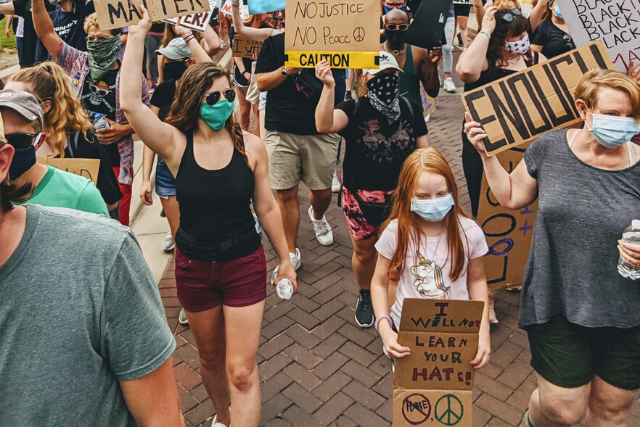Pandemic Field Guide For Parents
Article originally posted on https://caringmagazine.org/pandemic-field-guide-for-parents/
During times of change and uncertainty, we try to nurture and help our children feel safe. We want to provide answers to their questions and teach them how to face tough situations. However, in recent days we’ve all experienced unexpected rapid and impactful changes in our daily lives.
The coronavirus pandemic is a situation none of us have previously faced. This is a unique event, and we may therefore feel unsure and unprepared on how to best respond to our children in a way that will provide the safety we are used to giving them. As a parent, you are likely wondering when all of this will be over yourself. When will we be able to visit our friends and family again? When will my children play at their favorite park? When will we freely give hugs and shake hands? All of these questions are completely valid in a life-altering situation like the one we collectively face today.
Adult or child, most of us are experiencing anxious feelings about the sudden changes, social distancing, safety measures, disrupted daily routines and other shifts in your family dynamic. We simply do not have all the answers—and that may be true for a longer period of time than we initially anticipated. It is important to be aware of our own emotions so we can be role models to our children even in the midst of uncertainty.
This moment in time will be part of our children’s memories. We can make it a positive experience in how we respond to them and help to identify healthy ways to cope with stress, change and uncertainty. Notably, if we are afraid to feel, recognize and accept our own discomfort, they will too.
Keep in mind that we are all grieving different losses—school events, daily routines, family visits, vacations, birthday parties and our sense of freedom. Without a doubt, this will impact a child’s mood and behavior, whether they verbalize it or not. It is important to pay attention to changes related to how children are coping with the current situation. Here are a number of things to consider.
Look out for tantrums. Young children may have more tantrums than usual, be withdrawn, clingy, hypersensitive or regress in their behaviors. In older children and adults, you may notice increased mood swings, physical complaints, nervousness, worry, distractibility or difficulty sleeping. No matter the age, these changes are a way of coping and seeking safety and comfort in the middle of a stressful situation. Feeling some level of anxiety at this time is a normal response and it is helpful to have some awareness of it.
Be willing to talk. If your child asks about what a pandemic is or what is happening, don’t avoid the conversation, be truthful. Be curious about what your child already knows. Use age-appropriate language and examples your child can relate to, which will help him or her feel safe.
Name your emotions. Identifying and naming your emotions will provide validation and a sense of control during this time of confusion. If you and your child are experiencing uncertainty, fear, powerlessness, anger or frustration, make an effort to practice healthy outlets for those strong emotions.
Create a routine. Providing a sense of structure will allow you and your child to have some control and feel empowered during this time. Keep in mind that “structure” right now looks different for everybody. Avoid comparing your experience to someone else’s. If the color-coded detailed schedule your friend sent you does not work for you, stay away from it. The purpose of a routine is not to add more stress to a situation that is already anxiety-producing. Work together with your child to create fun ways to provide structure and flexibility at the same time. Including them in the process will make them feel seen and valued.
Have a mood check in. For some of us, it may be uncomfortable and new territory to talk about our feelings. Even though you do not have all the answers, try to find ways to check in on your and your child’s emotional states. We are our child’s safety net, so now we just need to allow a release of those emotions they may not understand or even be aware of. This can be as easy as giving a comforting hug, encouraging journaling, dancing to a song, praying together, engaging in pretend play or simply listening to whatever is on their mind. All you need to do is be there and be fully present. Our children do not always want specific answers; often, what they want is validation.
Stay connected. Social distancing does not mean social isolation. During this time, technology is a great source for staying connected to the people and things we value and miss. Additionally, knowing your limits and taking a break from the media when needed is a good way to model healthy boundaries and self-care.
Some days will be easier than others. Remember to be gracious to yourself and your child. You know your family better than anyone. Focus on what works for you and what has helped you thrive in times of past adversity. Please remember that you are an amazing parent—you are there for your child during a time that is challenging for us all.

